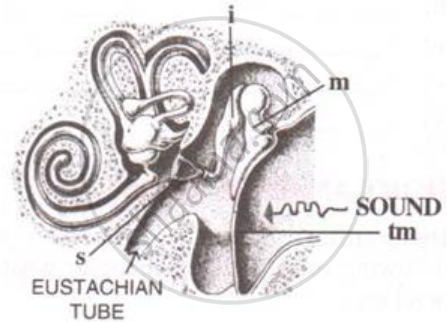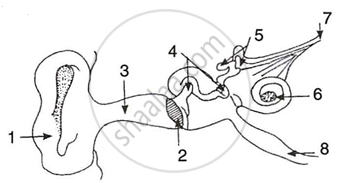Advertisements
Advertisements
प्रश्न
Differentiate between:
The middle ear and Inner ear.
उत्तर
| Middle Ear | Inner Ear |
| It has three ear ossicles and eustachian tube. | It has a cochlea, utriculus, sacculus, and semicircular canals. |
| It transmits sound vibrations. | It is concerned with hearing, balance, and equilibrium. |
APPEARS IN
संबंधित प्रश्न
Which part of our body helps us in maintaining the body balance?
Which part of our body helps us in maintaining the body balance?
Explain the following:
Mechanism through which a sound produces a nerve impulse in the inner ear.
fill in the blanks with suitable functions: Ciliary body and __________.
Differentiate between the Rods and Cones of Retina (Type of pigment)
Name the following:
The nerves which transmit impulse from ear to the brain.
Where is the Semicircular canals located? Briefly mention its function.
Where is the Utriculus located? Briefly mention its function.
Name the part of the ear associated with hearing.
With reference to the human ear, answer the question that follow:
Name the nerve, which transmits messages from the ear to the brain.
Name that part of ear which vibrates when outside sound falls on it.
The figure below is the sectional view of a part of the skull showing a sense organ:

What are the parts labeled 'm', 'i' and 's'? What do these parts constitute collectively?
Mention, if the following statement is True or False
Cochlea of the ear is concerned with the sense of balance.
Mention, if the following statement is True or False
Deafness is caused due to the rupturing of the pinna.
Complete the following sentence with appropriate Word
The sequence of ear ossicles of vertebrates starting from the tympanum is:
Which of the following structures equalises the air pressure on either side of the tympanum?
Where are the following located?
Eustachian canal
With reference to human ear answer the question that follow:
Name the part of the ear associated with dynamic balance.
- Draw a neat and well labelled diagram of the membranous labyrinth found in the inner ear.
- Based on the diagram drawn above in (i), give a suitable term for each of the following descriptions:
- The structure responsible for hearing.
- The sensory cells that help in hearing.
- The membrane-covered opening that connects the middle ear to inner ear.
- The nerves that carry impulses from the ear to the brain.
- The tube which equalises the air pressure on either side of the ear drum.
The figure given below shows the principal parts of a human ear. Study the diagram and answer the following questions.
 |
- Label the parts 1 to 8.
- State the role of parts 6, 7 and 8.
- Why is it harmful to use a sharp object to remove ear wax? Mention the number and name of the part involved.
